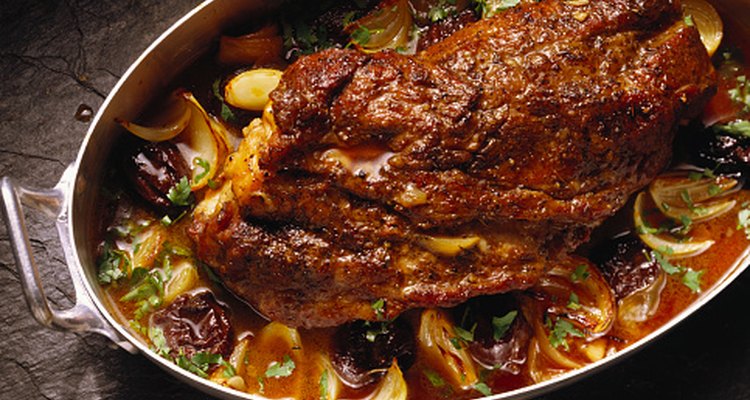
Using the right cooking pan can make the difference between effortless kitchen cleanup and a mess. A roaster, or roasting pan, is a deep pan that you use in your oven when cooking large cuts of meat such as pork shoulder or pork loin. You can use the spaciousness of a roaster to your advantage by cooking a pork entree and the accompanying sides within the cookware rather than dirtying multiple pans.
Preheat your oven to 350 degrees Fahrenheit to roast a pork shoulder or Boston butt, or 425 degrees Fahrenheit to roast a pork tenderloin. Line your roaster with aluminum foil or spray it with nonstick cooking spray.
Mix a marinade or use a dry rub, and brush it onto the pork with a pastry brush. Place the pork, fat-side down, in the roasting pan. Add vegetables such as potatoes, celery, carrots and onions, if desired. Put the roaster on a low rack in your oven.
Remove the roasting pan from your oven halfway through the cooking time and turn the pork so that the fat side is facing upward. Ladle juices from the bottom of the roaster onto the pork. Place the pork back in the oven.
Pull the roaster out of the oven periodically and check the temperature with a meat thermometer. Pork tenderloin is cooked adequately when reaching 155 to 160 degrees Fahrenheit and pork shoulder or butt is cooked adequately at 170 degrees Fahrenheit.
Cool the pork in the roaster for about 10 minutes. Place the pork and vegetables on a platter. Ladle juice from the roaster onto the pork to add flavor and to keep it moist.
Leave the remaining juices in the roaster. Place the roaster on a stovetop burner at low heat to keep the juices warm for use throughout your meal.
Related Articles
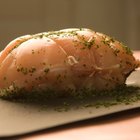
How to Braise Pork

How to Cook Pork Hamonado
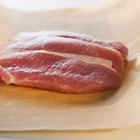
How to Cook Pork Pinwheels
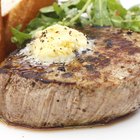
How to Grill Pork Tenderloins on a ...
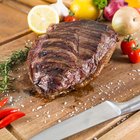
How to Cook 30 Pounds of Pork in a ...
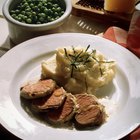
How to Cook Marinated Pork Loin From a ...

How Long Is Pork Good for While Frozen?

How to Make a Juicy Pork Tenderloin

Food Safety Tips for Frozen Pork

How to Make Pulled Pork In A Slow Cooker

The Secret to Cooking Tender Pork

How to Cook Pork Tenderloin With ...
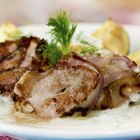
How to Cook Pork Tenderloin in a ...
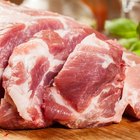
How to Make Asado Chinese Style
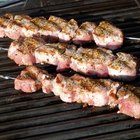
How to Cook Pork Loin
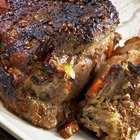
Barbecue Tips for Pork Rib Brisket

How to Roast a Pork Blade Cut

How to Cook Pork in a Skillet

How to Warm Up Pulled BBQ Pork
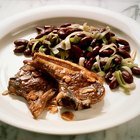
Cooking Instructions for Lamb Chops
References
Resources
Tips
- Follow the recommended cooking times for your pork recipe. Pork tenderloins typically require 20 minutes roasting time per pound and shoulder cuts or Boston butts require about 45 minutes roasting time per pound.
Writer Bio
Taylor DiVico is a professional songwriter, content writer, fiction novelist and poet with more than 15 years of experience. DiVico holds a B.A. in philosophy from the University of Rhode Island and an M.S. from Syracuse University.
Photo Credits
Eising/Photodisc/Getty Images